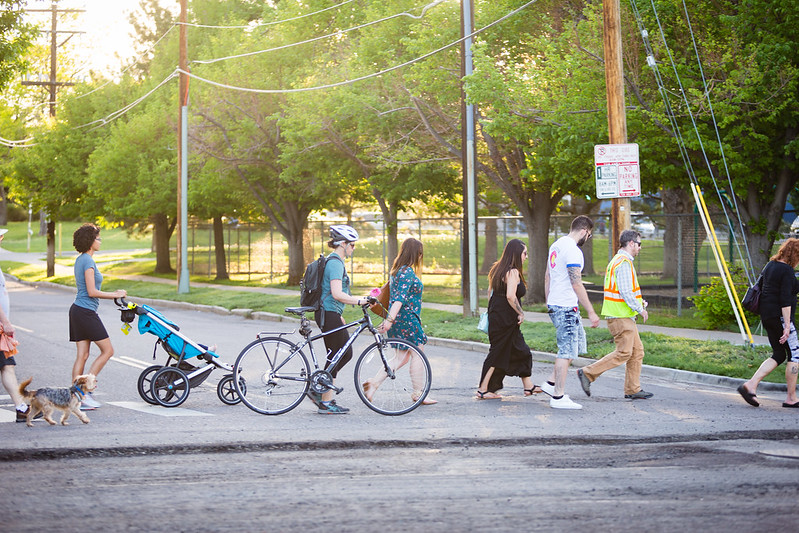In the past few years, Denver has adopted multiple plans with ambitious goals for eliminating traffic fatalities, reducing greenhouse gas emissions, providing more and better transportation options, and creating a more inclusive, equitable city. A key factor holding our city back from achieving these goals are outdated street design guidelines that prioritize the movement of cars over the health and wellbeing of people.
That is about to change, with the City’s recent release of draft “Complete Streets” Design Guidelines. The Denver Streets Partnership helped inform the development of the new guidelines by hosting a Summit earlier this year that brought together a diverse set of stakeholders to discuss community priorities for the use of street space and how to best manage all the competing demands for that space.
The foundation for the new guidelines is our favorite diagram from the recently updated Blueprint Denver, which clearly shows that people walking and rolling are the top priority on all city streets, followed closely by people biking, scooting, and using transit, with people driving alone in their cars at the bottom of the pecking order.


The guidelines support these priorities with several new street designs never previously used in Denver, including vertical traffic calming elements (speeds humps and raised crosswalks), Shared Streets that only allow cars as “guests” (more permanent versions of the Shared Streets the City has temporarily designated during the pandemic), and “Bicycle Highways” that allow high-comfort, grade separated movement for people on bikes.
The guidelines also still have room for improvement. While acknowledging the fundamental role of street design in determining the speed that people drive, the suggested “design speeds” for different street types are too high across the board. For example, the guidelines suggest that Downtown Streets should be designed for speeds up to 25 mph. For a part of town where an enormous number of people are moving around on foot, 20 mph is plenty.
View the guidelines at the link below and let the City know which designs you support and where they could improve!
View the draft guidelines here
